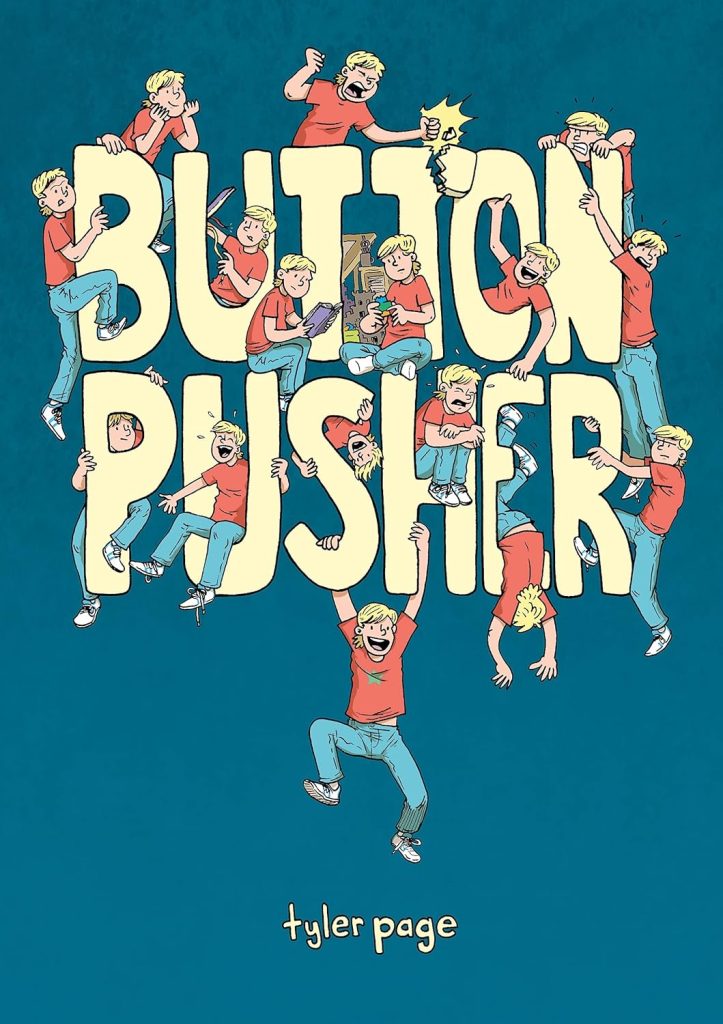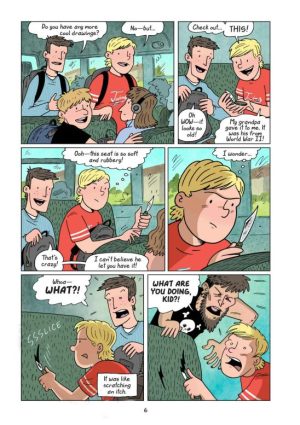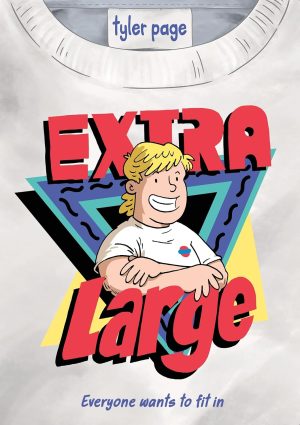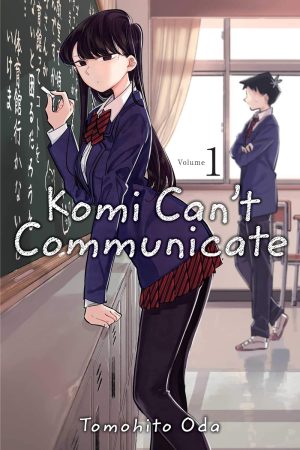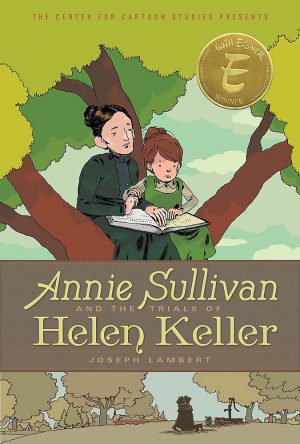Review by Frank Plowright
Midway through his primary school years Tyler Page is troubled. He’s not a bad kid, but has difficulty paying attention, he does things without really knowing why, and is a constant bundle of unfocussed energy. Eventually, after the incident pictured in the sample art, he’s referred for counselling. The importance of the young Tyler not feeling singled out is noted, so it’s suggested the entire family should attend, and the first session reveals deep rooted schisms.
Page has already released a graphic novel dealing with his subsequent ADHD diagnosis, Raised on Ritalin, which was a medical work presented from the viewpoint of his adult self, but Button Pusher is a more youth-friendly version. It doesn’t cement the period as the mid-1980s, and evades questions that will naturally occur to older readers. Referring again to the sample art, it seems astounding that school staff were more concerned about property damage than a child of eight bringing a knife into school. Page looks back on his younger self with considerable sympathy, as indeed he should. Attention Deficit Hyperactivity Disorder was just being diagnosed in the 1980s, and Page features several explanatory spreads relating aspects of the condition. A simple summary is supplied in the first of these, explaining how areas of the brain can delay connecting in children.
Friendly cartooning exaggerating reactions disguises the seriousness of the subject well, and were it not Page depicting his own symptoms it could be seen as trivialising them in places. However, he’s aware the style will help children finding this book in a library in perhaps recognising symptoms in someone they know, or perhaps even themselves. As situations at home become more toxic, the art serves to diminish the experience. It’s bad enough that’s how Page grew up without inflicting the horror and upset on another generation. Sections of the story are also separated with curiously undated medical reports giving a doctor’s analysis of condition and progress.
It becomes apparent after a while, that Button Pusher isn’t just about Page as a young child, and his father’s extreme behaviour becomes more prominent around the time a ritalin prescription is advised. Both threads continue through as Page details his experiences until old enough to leave home.
It’s now known that ritalin should be prescribed with caution, but it wasn’t in the 1980s, and while the young Page learns about his diagnosis and realises how the drug is helping him, the side effects are also manifesting. Page continues the medical chronicling of his younger life in Extra Large. However, Button Pusher stands alone as an immersive skate through a variety of emotions accompanied by sound advice.
